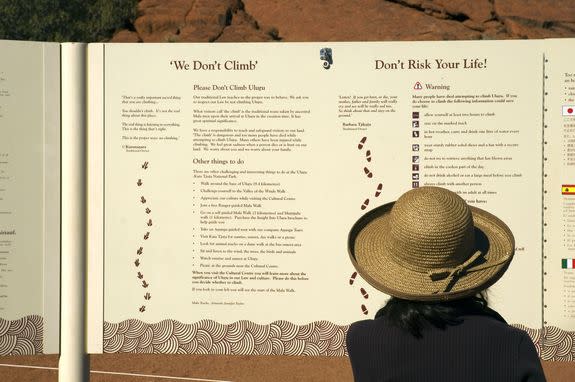Tourists will no longer be able to climb Australia's Uluru in 2019

Located in Australia's desert centre, Uluru (also known as Ayers Rock) is one of the country's most popular, yet sacred tourist destinations.
Since the 1930s, the spectacular monolith in Uluru-Kata Tjuta National Park has been climbable for tourists, despite staunch opposition from the land's traditional owners.
But in two years' time, climbing Uluru will be no more.
SEE ALSO: 7 apps that will help you survive a trip to outback Australia
Uluru's traditional owners and National Parks representatives voted to end the practice on Wednesday. The ban will come into effect on October 26, 2019, giving tour operators time to clear pre-booked visitors.
"Some people in tourism and government, for example, might have been saying we need to keep it open but it's not their law that lies in this land," Sammy Wilson, a traditional owner and a park board member, said in a speech.
"It is an extremely important place, not a playground or theme park like Disneyland. We want you to come, hear us, and learn ... We welcome tourists here. We are not stopping tourists, just this activity."
'Let's come together; let's close it together' The english translation of Sammy Wilson's speech which is about to be delivered #uluru pic.twitter.com/Z7cskRX8Fc
— Rohan Barwick (@rohwick) November 1, 2017
Uluru is a place of great spiritual significance to the Anangu people, the traditional owners of the land. The Central Land Council (CLC), who represents Aboriginal people in Central Australia, welcomed the move.
"This decision has been a very long time coming and our thoughts are with the elders who have longed for this day but are no longer with us to celebrate it," CLC director David Ross said in a statement.
"Why this decision wasn't made decades ago is a fair question ... Anangu have genuinely struggled to accommodate many powerful competing interests and have faced massive pressure."

Image: Getty Images/Lonely Planet Images
While there have been concerns over the ban's impact on tourism, the number of visitors who climb Uluru have steadily dropped, largely thanks to increased awareness and education.
Climbing Uluru has also been responsible for a number of deaths and incidents in years gone by. Last year, a group of three men had to be rescued by authorities after being stuck on top of the site.
"Today's decision to close the climb was unthinkable only 10 years ago," Ross added.
WATCH: Is the iPhone X's facial recognition twin compatible?


